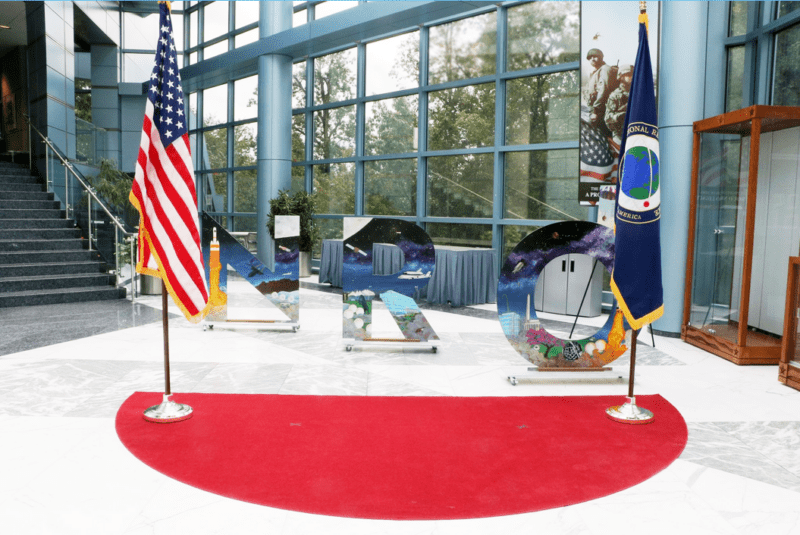Latest News
NRO, NGA, Space Command Release Portion of Framework to Protect Commercial Remote Sensing Satellites

Photo: National Reconnaissance Office
The intelligence community and U.S. Space Command (USSPACECOM) on Thursday released the executive summary of a new framework that outlines the roles and responsibilities of the government in helping to protect commercial space remote sensing providers that are under contract with the Defense Department’s National Reconnaissance Office (NRO).
The DoD and intelligence community are increasingly relying on imagery and other sensing data provided by commercial companies that have satellites in orbit to conduct Earth observation.
In early August, the signing of the Commercial Space Protection Tri-Seal Strategic Framework by USSPACECOM, the NRO, and National Geospatial-Intelligence Agency (NGA) was disclosed. The executive summary released by the signatories on Aug. 31 offers slightly more detail but essentially reiterates what Pete Muend, who heads NRO’s Commercial Systems Program Office, said earlier in the month, which is that the framework defines the agencies’ roles and responsibilities in the areas of threat information sharing, investigating, and responding to anomalies, and remote sensing collection strategies.
“Threat information sharing between the U.S. government and the commercial sector creates a better understanding of the space domain in general and the threats to collection assets specifically,” the July 12 executive summary says. “Anomaly reporting, investigation, and response are needed to inform appropriate and timely actions in the face of current and emerging threats. Commercial imagery collection strategies may need to be adjusted if threats require a change to commercial collection postures.”
A concept of operations (CONOPS) for enabling the three main areas of the framework will be developed and implemented by the agencies.
The NRO is responsible for contracting for commercial remote sensing imagery and has various contracts in place to purchase, and study, different sensing phenomenologies such as electro-optical, radar, and radio frequency. NGA provides the tasking, analysis, exploitation, and collection requirements for geospatial intelligence (GEOINT).
All three agencies and commands have responsibility to provide commercial imagery providers with threat information, which can be due to “congested or contested space environment,” they say.
The framework gives NGA the lead role in investigating incidents and adjusting sensing collection in response to a threat.
“When conditions and threats could potentially affect the operations of NRO-contracted commercial imagery providers, NGA will lead GEOINT assessments of suspected incidents as appropriate and will generate GEOINT reporting to contribute to assessments on adversarial capabilities, methods, and intents,” the executive summary says.
When a threat to a commercial space sensing asset has been discovered, “NGA will adjust collection tasking as warranted, assess whether to limit immediate U.S. requests for collection in the threat area in order to mitigate impact to commercial systems, and monitor activities or indications of similar events impacting other commercial satellites or national overhead systems,” the summary says.
USSPACECOM is the Defense Department’s newest combatant command and conducts operations to, from, and in space. The framework says the command will lead threat information sharing with “NRO-contracted” entities and the agency’s operations center “for space events, counterspace attack, and USSPACECOM warning problems,” and will also lead investigations into anomalies reported by commercial space remote sensing providers.
The command is also responsible for disclosing and releasing threat information and will establish classified and unclassified means to share this information, the framework says. It adds that the command will also “share and be available to discuss detailed counterspace threat information” to help commercial companies and the NRO with planning, CONOPS, and the development of tactics, techniques and procedures.
Muend, in August, said that the framework ensures that NRO-contracted commercial remote space sensing entities are obligated to inform the government of counterspace activities like jamming within two hours of discovery. He also said the primary threats in space are posed by Russia and China and that the cyber domain is also a threat vector to commercial space companies.
Except for the executive summary of the Tri-Seal document, the rest of the framework is classified.
Get the latest Via Satellite news!
Subscribe Now